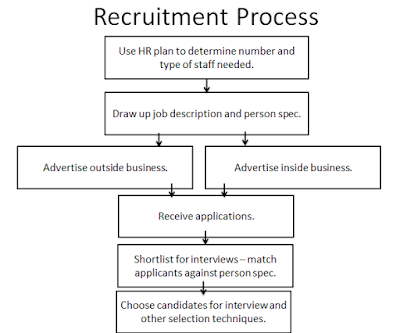- Process where a person/employee gains skills and knowledge.
- Helps to assist the organisation/business in meeting its objectives.
- HR organises induction (training for new staff) and training.
- HR plan will contain information on retraining and development.
- There are two types of training, off the job and on the job.
On the job
Advantages
Easy to organise.
Specific to the job and the business.
Cheap
Disadvantages
Disrupts normal working of the business.
Depends on the member of staff who is training them having the correct skills.
Off the job
Advantages
Done by specialist trainer.
Intensive and focused.
No workplace distractions.
New ideas can be exchanged.
Disadvantages
Expensive.
Disruptive (worker off site and therefore not being productive).
May be unable to apple training.



